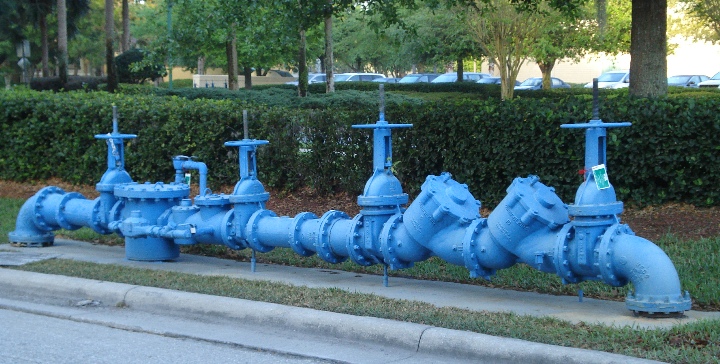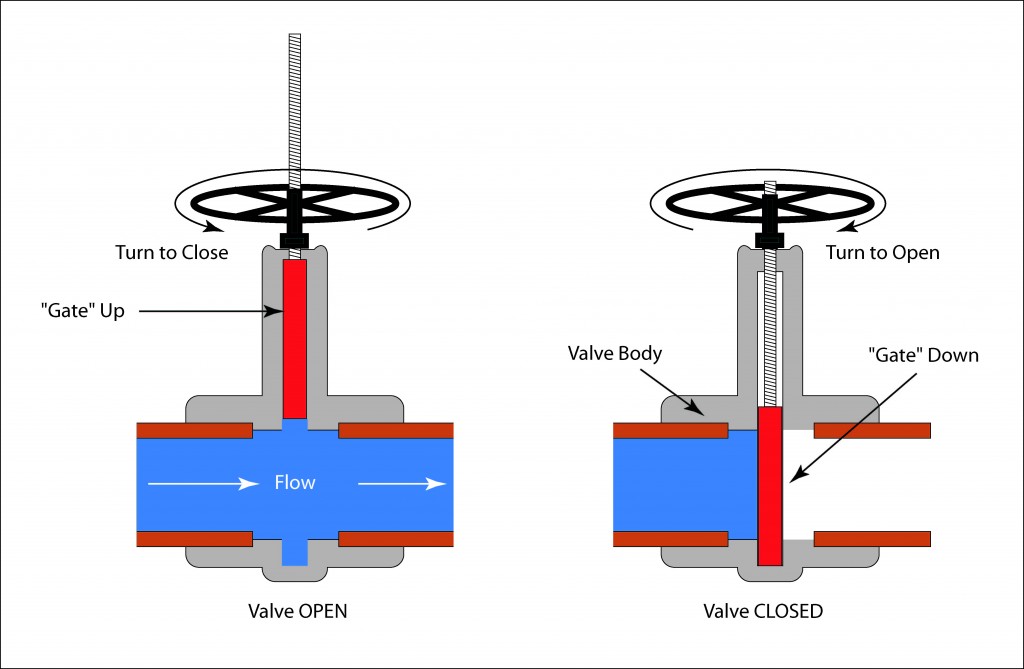The third of the basic types of manual valves is the “Gate” valve. This type of valve is probably not as familiar as the others but very important in the valve family. Although gate valves are made at least as small as 1/4″ to my knowledge, they are much more common in larger sizes. Almost all valves where the pipe size is measured in tens of inches or feet are gate valves. I just so happens that I am staying in a hotel right now where right out front there is a series of gate valves in the main water supply line to the hotel. Obviously, I am in a warm climate as these valves are not buried to prevent freezing as they would be at my home base in Jamestown, NY.

Gate valves, as the name implies, utilize a movable gate or door to allow or prevent flow. In most cases the gate is raised or lowered using a mechanical assist of some kind – often a threaded screw.

Flow is initiated by lifting the gate and prevented by lowering the gate as shown in the illustration above.
Gate valves, because of the mechanical assist can be made quite large and still be operated manually. Even the gate on a valve with a diameter several feet can often be operated by one person.
A “butterfly” valve is a variation of the gate valve with a “gate” that swivels around a central axis to allow or prevent flow.

The “damper” in a stove pipe is a simple butterfly valve. Larger sized butterfly valves may require considerable force to open and close and are, therefore, often fitted with a long lever to assist in turning the gate.
Gate and butterfly valves are often used in applications where the valve will not be operated frequently. Both provide the benefit of an unrestricted full flow when open but do have the ability to “throttle” or reduce flow if required by positioning the gate between the full open and full closed positions. In general, this type of valve is not used in extremely high pressure applications as the gate acts as a diaphragm and can be bent or even burst by high pressure.
Good examples of gate and butterfly valves can be found in most locks used to raise and lower the water level in a channel or canal to move boats from a body of water at one elevation to one with a higher or lower elevation. The valves that open and close the ends of the channel are double-sided gate valves. Butterfly valves are located below the lock to supply water from the higher body of water to fill the lock or release water from the lock to the body of water at the lower elevation. These valves are under relatively low pressure but need to provide a significant volume of flow to operate the lock quickly and efficiently.
– FJF –



 English
English Spanish
Spanish Chinese
Chinese Canada
Canada Mexico
Mexico United Kingdom
United Kingdom



